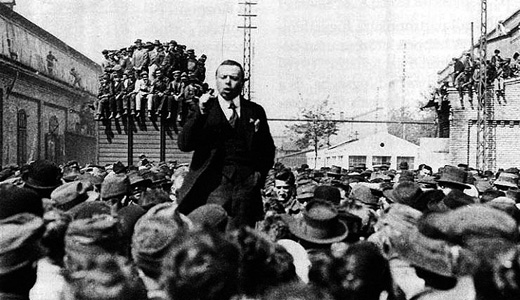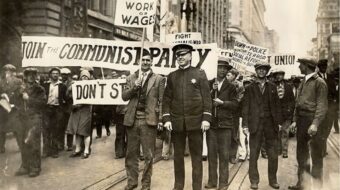
On August 7, 1919, the Republic of the Councils of Hungary in Budapest was crushed by foreign reactionaries.
On August 5, 30,000 Romanian troops entered the capital and began a reign of terror. They massacred a thousand workers in Csepel (on an island in the Danube between Buda and Pest), on August 10. Thousands of Communists, socialists, unionists and innocent civilians were rounded up by fascist gangs, and then beaten, tortured and killed.
A People’s World article by Emile Schepers gives this detailed background:
In the First World War, Hungary was part of the old Austro-Hungarian Empire, with a large amount of internal autonomy, though the emperor of Austria was also the king of Hungary.
After the defeat of the Central Powers in 1918, large pieces of Hungary’s land and population were divided up among its neighbors, Romania and two new states that came out of the war, Czechoslovakia and Yugoslavia. The old regime in Hungary, which was dominated by landholding aristocrats and urban bankers and industrialists, was swept from power.
First a liberal regime (under Mihaly Karolyi) and then a short-lived communist one (under Bela Kun) were unable to solve the country’s internal problems or successfully resist pressure from the victorious Entente powers, especially Romania and France.
As a result, not only did Hungary lose territory in the Trianon Treaty of 1919, but as many as a third of the Magyars, or ethnic Hungarians, ended up outside Hungary’s borders. There was a special resentment of the fact that Transylvania, formerly an autonomous principality with a large Magyar population, went to Romania.
In 1919, reactionary forces grouped around Admiral Miklos Horthy de Nagybanya swept into power, displacing Bela Kun’s communist-led government. Their project of repressing communists, socialists and trade unionists inspired the promotion of a right-wing nationalist ideology that could justify such measures. The right-wing slogan “nem, nem soha” (“no, no never”), which referred to the loss of Hungarian territory and people, dates from this time.
Photo: Bela Kun speaking to crowd.










